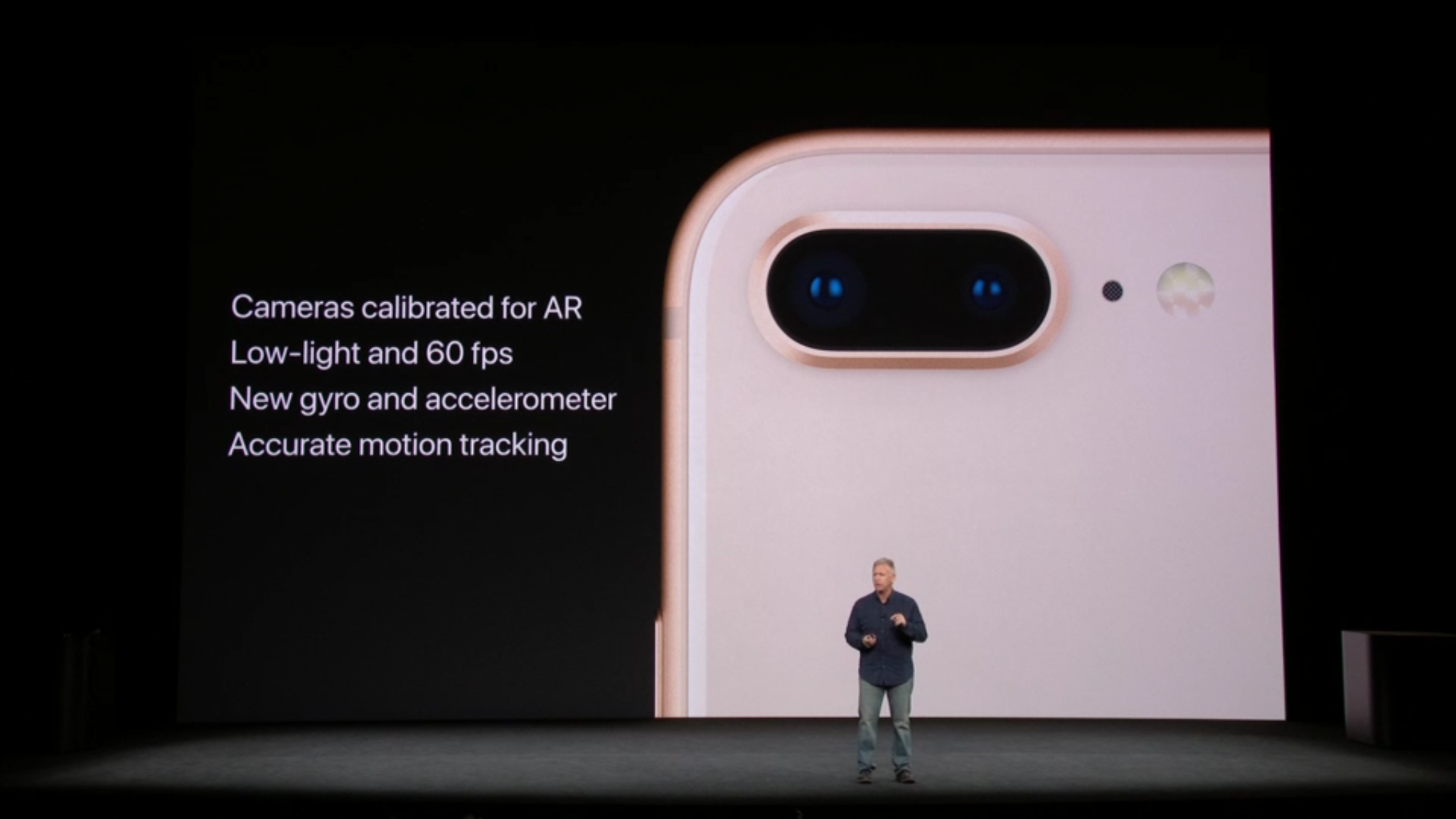iPhone 8, iPhone 8 Plus and iPhone X camera specs: Features confirmed
Apple has finally confirmed the new iPhone models - here's what you need to know about the imaging side of things

After masses of speculation and a handful of leaks, Apple has finally confirmed the iPhone 8, iPhone 8 Plus and the iPhone X.
We'll be covering the imaging side of things below – for a more detailed overview of the new models as a whole, head over to Techradar.

iPhone 8 and iPhone 8 Plus Features
- 12MP dual-lens rear cameras (iPhone 8 Plus only)
- 7MP front-facing camera with f/2.2 lens
- Optical zoom and 10x digital zoom (iPhone 8 Plus only); 5x digital zoom (iPhone 8)
- Wide and telephoto lenses, with f/1.8 and f/2.8 apertures respectively (iPhone 8 Plus only)
- New A11 Bionic chip
- Dust, splash and water resistance
- New Retina HD display (4.7in on iPhone 8; 5.5in on iPhone 8 Plus)
- 1334x750-pixel resolution at 326 ppi (iPhone 8); 1920x1080-pixel resolution at 401 ppi (iPhone 8 Plus)
- Cinema wide colour gamut
- Portrait mode and Portrait Lighting mode (iPhone 8 Plus only)
- New pixel processing for sharpness and texture
- Hardware enabled multi-band noise reduction
- Faster AF in low light
- Quad-LED True Tone flash with slow sync
- Wireless charging
- Animoji feature
- Silver, space grey and gold finish

iPhone X Features
- 12MP dual-lens rear cameras
- Wide and telephoto lenses, with f/1.8 and f/2.4 apertures respectively
- Optical zoom and 10x digital zoom
- Front-facing TrueDepth camera system
- Dual optical IS
- Quad-LED True Tone flash with 2x better uniformity of light
- A11 Bionic chip
- Water and dust resistant design
- Portrait mode feature (both front and back cameras)
- 5.8in Super Retina OLED display; 2436x1125 pixels and 458ppi
- True Tone Display
- Slow Sync Flash
- 1million-to-one contrast ratio
- No Home button
- Tap-to-wake feature
- Wireless charging
- Animoji feature
iPhone 8, iPhone 8 Plus and iPhone X: New A11 Bionic chip
This new chip found inside all three models provides a wealth of performance boosts over the previous A10 model.
What's particularly useful for both photographers and casual users is the fact that you now get faster autofocus in low light.
New pixel processing promises better for sharpness and texture, while hardware-enabled multi-band noise reduction should help clean up images a little better too.

iPhone 8 Plus and iPhone X: New rear-facing, dual-camera designs
The iPhone 8, iPhone 8 Plus and iPhone X each sport rear-facing 12MP cameras.
The iPhone 8 Plus and iPhone X have a dual-lens design, with wide and telephoto lenses, while the iPhone 8 just gets the one.
The best camera deals, reviews, product advice, and unmissable photography news, direct to your inbox!
Apple says the back-illuminated sensors have an "all-new" design, with deeper pixels and a new colour filter, which "enable wider dynamic range and better colour saturation".
The sensors are also said to absorb a whopping 83% more light than the sensor inside the iPhone 7, which is very encouraging for those frequently shooting in low light.
On the iPhone 8 Plus, the wideangle lens has an aperture of f/1.8 while the telephoto optic has an f/2.8, and optical image stabilisation is on board too.
This is also true of the cameras inside the iPhone X, although the telephoto lens has a wider f/2.4 aperture.

iPhone 8, iPhone 8 Plus and iPhone X: Better video shooting modes
Not only do the models offer 4K video at 24, 30 and 60fps, but you can also record Full HD footage at frame rates up to 240fps for ultra-slow-motion playback.
Normal HD footage is recorded at either 30fps or 60fps, although you can also call upon a 720p option at 30fps.
Video stabilisation is also said to be improved from the iPhone 7. Apple didn't go into any details as to how, but hopefully we'll see better stability when moving around.
You can also take 8MP still images when recording 4K videos with all three models.

iPhone 8, iPhone 8 Plus and iPhone X: Displays
While the iPhone 8 will get a new 4.7in display, the iPhone 8 Plus will see a 5.5in version.
The former has a 1334x750pixel resolution at 326ppi, while the latter has a Full HD (1920x1080) display at 401ppi.
Each is a new Retina Display, with a 'cinema-wide" colour gamut, although it's the display on the iPhone X that sounds particularly tasty.
Measuring 5.8in in size, it's a Super Retina OLED display that packs 2436x1125 pixels and goes from edge to edge. This resolution and size give it a super-high density of 458ppi for extra clarity.

iPhone X: TrueDepth Camera system
The iPhone X sports a new TrueDepth camera system, which is the front-facing camera. Not only is this responsible for helping you snap selfies, but it also enables Face ID.
This unit comprises a front camera, ambient light sensor, infrared camera, flood illuminator, proximity sensor and a dot projector, as well as a speaker and microphone.
And, with all of this on board, the camera is able to be unlocked just by sensing your face – just as well, as there's no Home button anymore.
The iPhone 8 and iPhone 8 Plus, meanwhile, sport 7MP front-facing cameras, with back-illuminated sensors and an f/2.2 aperture in each lens.
iPhone 8 Plus and iPhone X: Portrait modes
The iPhone 8 Plus and iPhone X models sport a new Portrait and Portrait Lighting modes, which use real-time analysis to help you capture a better portrait. This works on both the front and rear cameras.
Apple says this is still in beta, but that it will ship with both models from the start.

iPhone 8, iPhone 8 Plus and iPhone X: AR functionality
As was strongly rumoured before today's launch, the cameras inside the new iPhone 8 Plus and iPhone X have been calibrated for Augmented Reality (AR).
